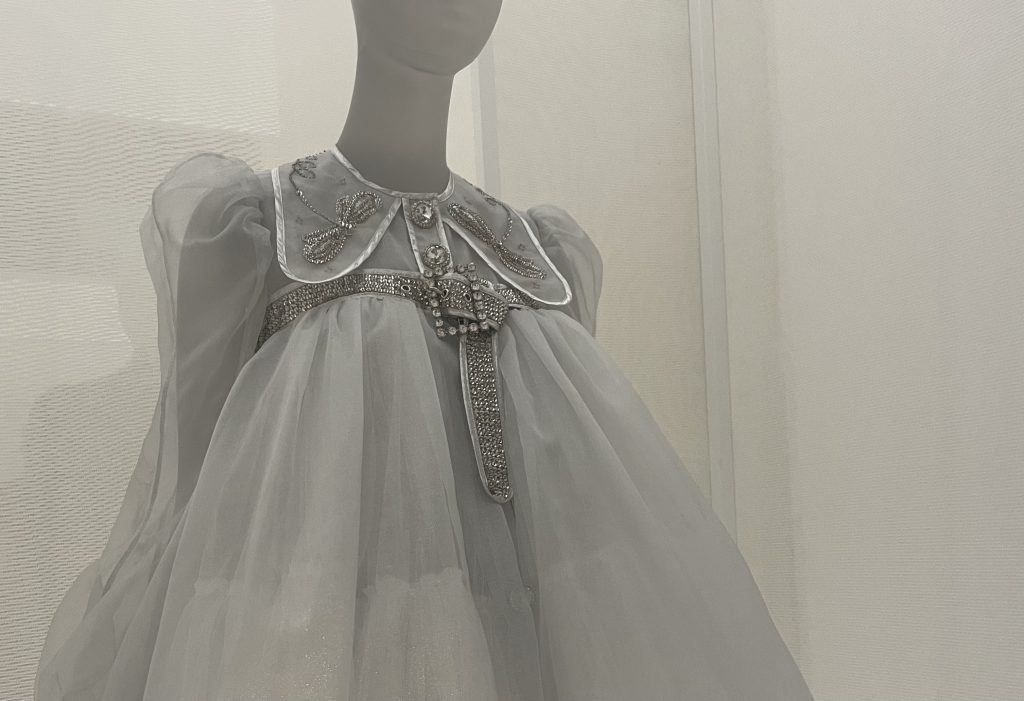Documenting and discovering your inspiration: A how-to
Ah, concept development. We all know settling on an idea for an upcoming project is no small task. And it can be even harder when it feels like you’ve got a matter of days to pull something from thin air. With limitless options where do you begin? The internet? Your camera roll?
Inspiration has the potential to strike at any moment…or not. Realistically you aren’t always going to have one of those oh-my-god epiphany moments when it comes to inspiration. More often than not you’ve got to go out of your way and search for it.
If you’re oftentimes one of the many people that feels like they have no idea where to start, try some of these suggestions to get those creative wheels turning/spinning.
Rule #1: take photos of everything
Seriously. Do it. I don’t just mean drapes on the stand, but a texture you like or pages from an old book. I couldn’t even tell you what percent of my camera roll is photos I’ve taken for inspiration, but it’s a significant chunk. You never know when you’ll need an interesting graphic or ideas for your portfolio.
Visit stores like Antidote to research luxury finishings
You may not be able to accomplish everything a large brand with multiple factories can, but you should still be researching high-end finishings and figuring out how to incorporate them (or something similar) into your work. Finishings make all the difference. Stores like Saks and Neimans are good if you want a one-stop shop for market research, but personally, I try to avoid Lenox. Antidote, on the other hand, stocks more unique designers the bigger department stores often don’t, and they’re five minutes from SCAD.
Keep a physical inspiration board
This allows you to pin and unpin fabrics, photos, sketches, and whatever else. Having a board like this in your space forces you to live with your ideas and will help spark new ones. And using pins or removable tape allows you to rearrange, add or delete things as your designs and concept develop. A board like this is essential in any home studio, and the bigger the better.
Go to the library
There are endless resources at this school and the library is one of the best. I’ve spent hours here going through books and taking photos during the research phase of concept development. If you’re willing to block out the time it’s so worth it, and oftentimes far better than just using the internet.
In terms of local libraries, the SCAD library is probably your best bet, especially since they buy some very nice (expensive) fashion books. But just in case, hit up your local library or an antique store and keep an eye out for fashion-related or patternmaking books. You never know!
Vintage/secondhand shops
This is probably my favorite form of research because it’s the most fun. What fashion designer doesn’t love shopping and trying on clothes? Check out the local artist markets too, they’re usually full of vintage vendors. Here are just a few of my favorite places: Clothing Warehouse (or any secondhand store in Little 5 Points,) Any GVG event, Motherlode, and obviously Goodwill. And again, take photos of everything.
According to David: “become obsessed”
You’ve got to become obsessed with the thing you’re going to do, if you’re not obsessed you’re only going to touch the surface level. You have to constantly be feeding your mind with new material. Since COVID, Prof. Longshaw says he sees far too many students working solely on the computer or grabbing images from the first page of Google. He offers a better alternative: Get out of the house! Get out of SCAD! Sit down and go through entire books (no skimming.) And look outside of fashion too.
Yes, you need to keep up with what’s going on in the industry, but there’s so much more out there to inspire your work. Check out obscure art exhibitions, explore other disciplines, watch old films, go to art galleries, expose yourself to everything.
Collage!!

Whether physically or digitally, collaging is a great way to discover new ideas. For me, physical collage is therapeutic. It’s so important to take mental breaks but we don’t always have the time. This is a fun relaxing way to keep your research moving forward while still giving your body and mind a bit of a breather. Digital collage is great for when inspiration strikes on the go, and Procreate can be a great tool for developing ideas, but working three-dimensionally is so much more satisfying. Just remember to find a balance.
Fabric manipulation and seam samples
Personally, I’m not a fabric manipulation person, but I was able to chat with some classmates who are (shoutout Megan and Meredith) and get some advice. First of all, the “Art of Manipulating Fabric” is a must-buy. And it’s essential that you keep all of your samples (manipulations, seams, or stitches) no matter how small. Even if you think you’ll never need them, store them in a binder, labeled and dated. Keep everything. It’s also important to take notes of everything you do. Measurements, your process, and discoveries; especially when you’re working with pleats or smocking. Experiment with as many techniques as you can, and be open to things not working. It’s all a part of the process.
Play with draping
Try experimenting with draping pre-existing garments in unusual ways. Every time I’ve done this I’ve come up with an idea far more interesting than anything I would have come up with just by draping a piece of fabric. If you’re using something you thrifted for super cheap or a top you don’t care about, cut it up. This is my favorite way to drape and how I discover the best ideas. And try things on too! Try garments on in weird ways and take photos. I do this all the time to get ideas, constantly pinning and unpinning. Sometimes it really helps to see things on an actual body instead of the forms at school.
Visit museums

The High Museum is the obvious choice, it’s so close to campus and next door to SCAD House. While not specifically a fashion museum, they’ve got an extensive permanent collection and great exhibitions. They offer student memberships, monthly museum passes, and free admission on second Sundays too.
The SCAD Fash Museum is another great one, especially for fashion students. You’ve likely been up there on a class field trip or two, but if you haven’t, Go check out the Madame Gres exhibit immediately, it’s amazing and another great source of inspiration.
And when planning a trip, keep in mind the museums, galleries, and art scene in the area. Get two things accomplished at once, a vacation and some research.
Off the record: Instagram/Pinterest
Ever feel like if you’re not constantly refreshing your feed you’ll miss that perfect photo that could spark your best idea ever? I do, and I know it’s not just me. We live in a time where we’re exposed to a constant flow of content and it can be both a blessing and a curse. It’s great to be able to type whatever you’re looking for into a search bar and have a thousand images pop up on demand. But even if it feels like your feed is unique, keep in mind that thousands of other people are seeing the exact same thing on theirs. While social media can be a helpful resource, take some time every once in a while to open a book or two. Yes these sites can be helpful, I have countless Pinterest boards and Instagram folders, but don’t rely on them. Ultimately, what you do with these images will be the difference between a new idea and a recycled one.
My biggest piece of advice with all of this is to trust the process. Things will change and your ideas will constantly evolve, but don’t panic. Where I started with my initial senior collection research and inspiration isn’t at all where I am now. And that goes for many of my classmates too. This is completely normal and all a part of the process. Be open to new discoveries and edit what’s no longer working. Change is usually for the better, and your ideas will continue to develop as you grow as a designer. Just remember to be curious, be open to trying new things, and don’t be afraid to fail.
Questions? Ideas? Want more? Let us know at style@scadconnector.com.
Interested in joining the Godet community? Feel free to fill out this quick form so we can get to know you!

























